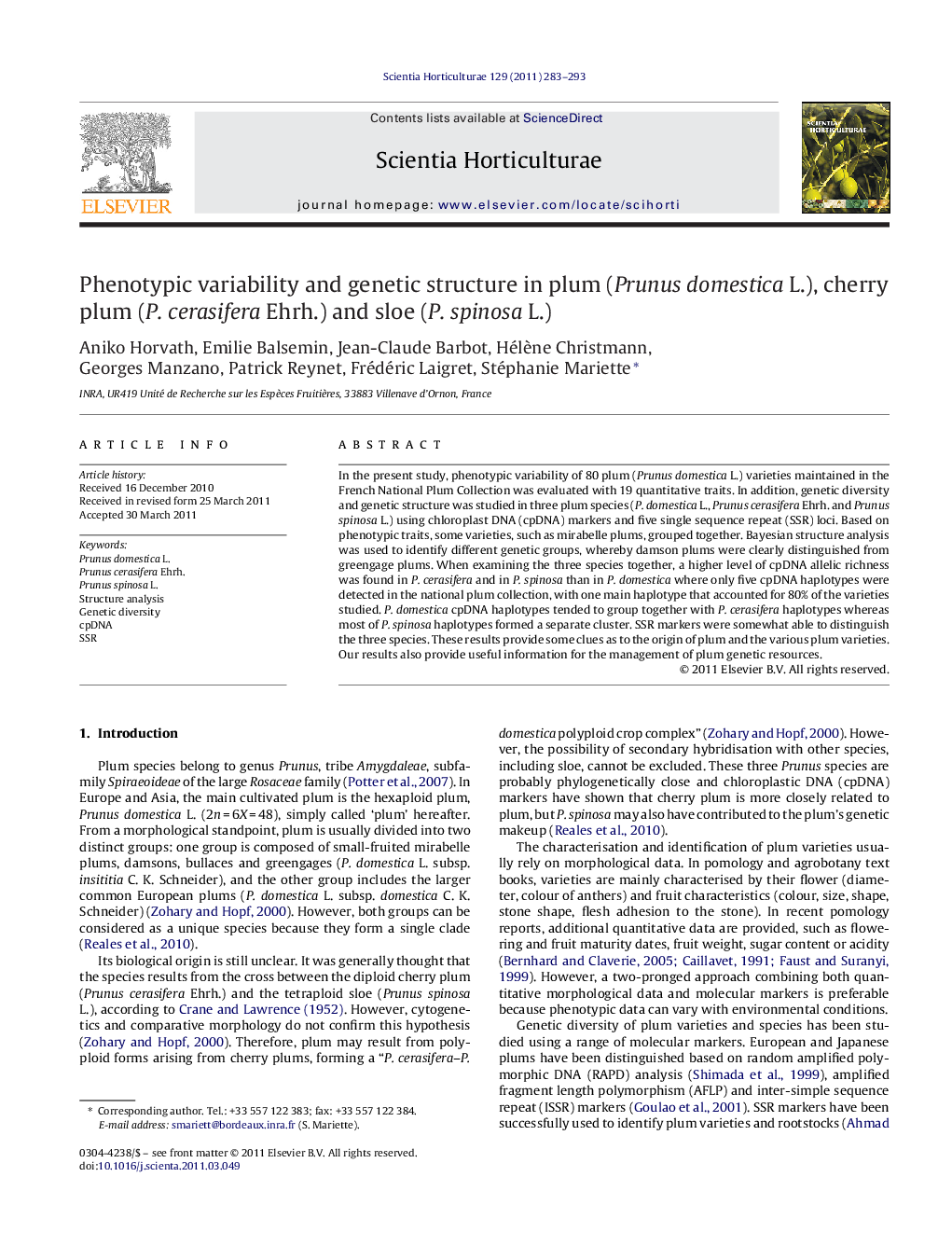| Article ID | Journal | Published Year | Pages | File Type |
|---|---|---|---|---|
| 4568416 | Scientia Horticulturae | 2011 | 11 Pages |
In the present study, phenotypic variability of 80 plum (Prunus domestica L.) varieties maintained in the French National Plum Collection was evaluated with 19 quantitative traits. In addition, genetic diversity and genetic structure was studied in three plum species (P. domestica L., Prunus cerasifera Ehrh. and Prunus spinosa L.) using chloroplast DNA (cpDNA) markers and five single sequence repeat (SSR) loci. Based on phenotypic traits, some varieties, such as mirabelle plums, grouped together. Bayesian structure analysis was used to identify different genetic groups, whereby damson plums were clearly distinguished from greengage plums. When examining the three species together, a higher level of cpDNA allelic richness was found in P. cerasifera and in P. spinosa than in P. domestica where only five cpDNA haplotypes were detected in the national plum collection, with one main haplotype that accounted for 80% of the varieties studied. P. domestica cpDNA haplotypes tended to group together with P. cerasifera haplotypes whereas most of P. spinosa haplotypes formed a separate cluster. SSR markers were somewhat able to distinguish the three species. These results provide some clues as to the origin of plum and the various plum varieties. Our results also provide useful information for the management of plum genetic resources.
► A high level of phenotypic variability was found in plum varieties. ► Damsons and greengages were clearly distinguished using a structure analysis on SSR. ► cpDNA markers allelic richness was higher in cherry plum and in sloe than in plum. ► Plum and cherry plum cpDNA haplotypes tended to group together. ► SSR markers tended to distinguish the three species.
